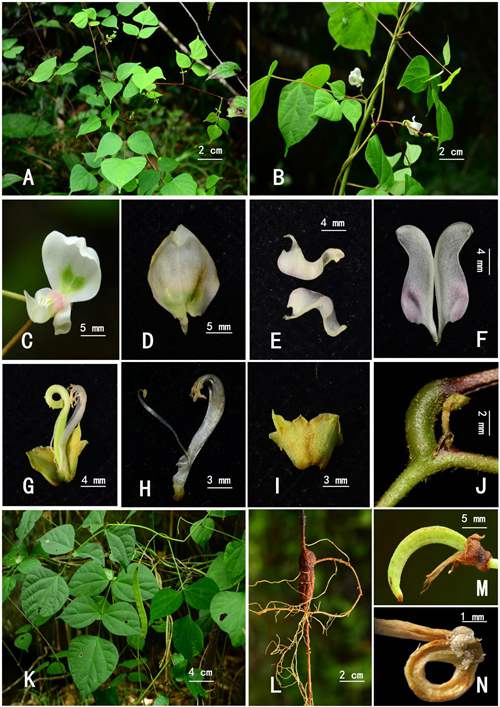|
|
Apios chendezhaoana--An endangered Fabaceae plants which has buried for more than 90 years Apios is a typical butterfly flower plant in legumes.It usually has a significant root, odd pinnate compound leaves grass vine, broken out of white milk. Produced in East Asia and eastern North America, it is a typical North American discontinuous distribution group in East Asia.There are 2 species of apios fortunei in North America, Apios americana and Apios priceana. The species of apios fortunei produced in China have not been sorted for a long time, and the number of species has not been determined, 《Flora of China》 wrote that China produces 6 kinds of apios fortunei. Pan Bo, The experimenter of biodiversity reseach gruop in CIC, together with the colleges from Zhongnan Forestry University, Hunan Normal University, Kunming Plant Research Institute, Fujian University of Traditional Chinese medicine, Hunan Agricultural and Forestry Survey and Design Institute and other colleagues through field investigation, molecular systematics and specimen research, completed the classification and revision of the genus untruths, accepted 4 species and 2 variants. These include a newly discovered Apios species with a unique form--Apios chendezhaoana. Its form is familar with Apios fortunei, But the difference is: the lobes have a longer tail tip, corolla white, keel flap does not favor one side, style enlargement, under the stigma of the cluster hairs. The number of individuals is very small, may not be more than 250 strains, belong to endemic species and endangered species. The species is only located at the junction of Fujian, Jiangxi, Guangdong, Hunan and other provinces, at present, only 23 specimens have been found, 15 sites have been recorded, dispersed in 8 specimen halls. The species “Apios chendezhaoana (Fabaceae), an overlooked species and a new combination from China: evidence from morphological and molecular analyses” has been published in Phytotaxa.
|




